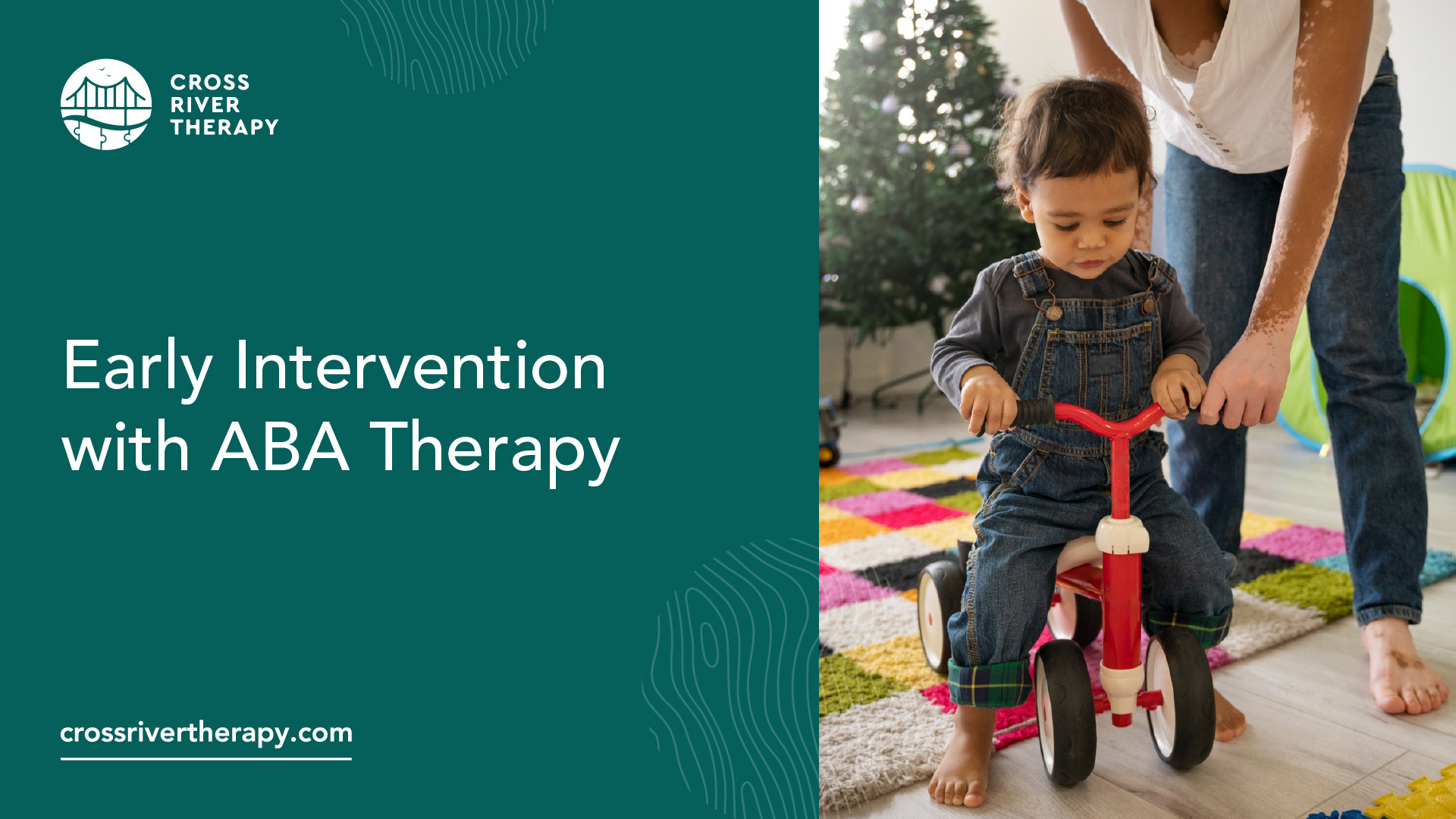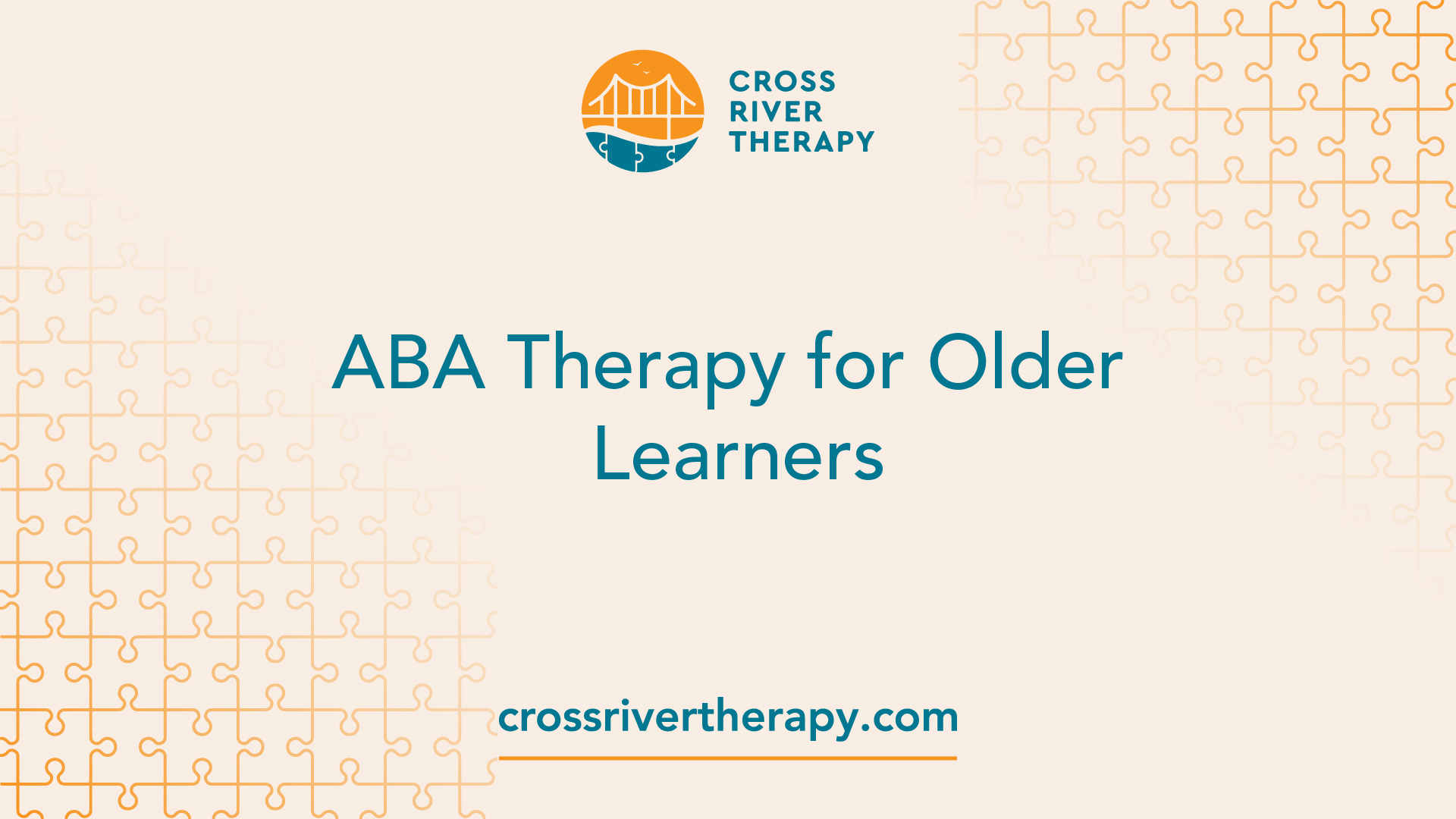Early Intervention with ABA Therapy
Discover the lasting benefits for children with autism.
ABA Therapy for Early Learners
When it comes to autism intervention, early intervention is crucial for maximizing the potential of children diagnosed with autism. ABA therapy (Applied Behavior Analysis) has been proven to be highly effective in improving developmental outcomes for children with autism. Let's explore the benefits of intensive therapy and specialized programs designed for children between the ages of 2 and 4.

Benefits of Intensive Therapy
Research suggests that for early learners (ages 2-7), higher treatment hours in ABA therapy result in greater benefits, with rates of skill acquisition being strongly interconnected with the intensity of therapy. Early intervention ABA programs, such as Early Intensive Behavior Interventions (EIBI) and the Early Start Denver Model (ESDM), target children between the ages of 2 and 4 and typically involve 20 to 40 hours of intervention services per week [1].
Intensive ABA therapy provides children with consistent and structured learning opportunities that focus on building communication skills, social interaction, and adaptive behaviors. By providing a high number of therapy hours, children have more opportunities to practice and generalize skills, leading to better outcomes in areas such as language development, social skills, and cognitive abilities.
Programs for Ages 2-4
Early intervention ABA programs, such as the Early Start Denver Model (ESDM), have shown promising results in improving outcomes for children as young as 2 years old. The ESDM is an intensive early intervention program that combines ABA principles with developmental psychology. Children enrolled in the program receive 20 hours per week of therapy, along with parent training.
These programs focus on providing individualized treatment plans based on the child's unique needs and strengths. A team of trained professionals, including behavior analysts and therapists, work closely with the child to implement evidence-based strategies and interventions. The goal is to enhance social interaction, communication skills, and overall development.
By starting ABA therapy during the early years, ideally between the ages of 2 and 4, children have the opportunity to address core deficits associated with autism at a critical stage of their development. Research has shown that initiating ABA therapy as early as possible can lead to substantial improvements in developmental outcomes for children with autism. Early intervention programs provide children with a solid foundation for future learning and pave the way for positive long-term outcomes.
If you're considering ABA therapy for your child, it's important to consult with professionals experienced in early intervention for autism. They can help determine the optimal age for diagnosis and guide you through a comprehensive treatment approach. Remember, early intervention is key to providing your child with the support and tools they need to thrive.
ABA Therapy for Older Learners
As children with autism grow older, their needs and developmental goals change. ABA therapy can be effectively tailored to address the specific challenges and promote growth in older learners. Let's explore the tailored approaches and real-world application of ABA therapy for older learners.

Tailored Approaches
For older learners (ages 7 and above), ABA therapy takes into account their unique developmental stage and individual goals. Beneficial results can be achieved with shorter weekly hours, allowing children to engage more in outside activities and develop practical safety, social, and life skills [1].
ABA therapy for older learners focuses on building upon existing skills while introducing new ones. The therapy can be customized to address specific challenges such as social skills deficits, behavioral issues, and adaptive functioning. Individualized goals are set to enhance independence and improve overall quality of life.
Real-World Application
One of the advantages of ABA therapy for older learners is the opportunity to apply learned skills to real-world settings, such as school, sports, activities, and the community. This allows for the generalization of skills and the development of functional independence.
By integrating ABA strategies into daily life, older learners can navigate social interactions, manage daily routines, and adapt to various environments. The focus shifts from primarily therapeutic settings to enhancing their ability to function successfully in real-world situations.
The real-world application of ABA therapy for older learners extends beyond individual goals. It also emphasizes the importance of collaboration and support from parents, teachers, and other professionals involved in the learner's life. By working together, a comprehensive approach can be implemented to ensure consistent progress and lasting improvements.
While ABA therapy for older learners may have different emphases and objectives compared to therapy for early learners, the underlying principles of behavior analysis remain the same. The therapy aims to create positive, meaningful change by breaking down complex skills into manageable steps and reinforcing desired behaviors.
By tailoring ABA therapy to the unique needs of older learners and emphasizing real-world application, significant progress can be made in enhancing their quality of life and independence. ABA therapy offers a comprehensive and individualized approach that supports the ongoing development and growth of individuals with autism.
Graduation and Continued Support
As children progress through their ABA therapy journey, it is important to consider the concept of graduation and continued support. ABA therapy is designed to provide individuals with the necessary skills to succeed in the world, potentially reaching "normal" functioning levels relative to other children within their age group.

Success Indicators
Graduation from ABA therapy services is typically considered when a child has made significant progress and developed essential skills that allow them to function independently and effectively in various environments. While the specific success indicators may vary depending on each child's unique needs, some common indicators include:
- Improved social skills and interactions
- Enhanced communication abilities
- Reduced challenging behaviors
- Increased adaptive skills for daily living
- Improved academic performance
It is essential to work closely with the ABA therapy team to establish clear goals and objectives for your child. Regular assessments and progress evaluations are conducted to track their development and determine when they have reached the necessary milestones for graduation.
Reinitiating Therapy
Graduation from ABA therapy does not necessarily mean the end of the journey. Some individuals may require additional support later in life as they face new challenges and transitions. In such cases, reinitiating ABA therapy can be beneficial to address their evolving needs and provide continued guidance and support.
The decision to reinitiate therapy is typically based on individual circumstances and the specific needs of the individual. It is important to recognize that ABA therapy can be a lifelong resource, offering ongoing assistance to individuals with autism. By reestablishing a therapeutic relationship with an ABA provider, individuals can continue to build upon their existing skills, address any emerging challenges, and receive guidance for navigating various life stages.
The long-term benefits of ABA therapy are significant, with research showing that children who receive early intervention are less likely to require support services later in life. Some children with autism who receive early intervention make significant progress to the extent that they are no longer on the autism spectrum as they grow older [4]. Therefore, the journey of ABA therapy may not be a linear process, and continued support can be instrumental in helping individuals thrive.
By recognizing and celebrating the achievements of your child throughout their ABA therapy journey, you can ensure that they receive the necessary support and resources to navigate their future with confidence and success.
Importance of Early Intervention
When it comes to autism spectrum disorder (ASD), early intervention plays a pivotal role in shaping positive future outcomes for children. Research consistently indicates that accessing early intervention for autism is more likely to result in favorable outcomes compared to starting intervention later in childhood or adulthood. Let's explore the positive future outcomes and long-term benefits associated with early intervention for ASD.
Positive Future Outcomes
Children who receive early intervention services have shown better outcomes across various domains compared to those who do not receive intervention. Studies indicate that early intervention can improve a child's IQ by an average of 17 points, leading to enhanced cognitive abilities. Early intervention focuses on crucial areas such as communication, socialization, and behavior, which are vital for a child's overall development. As a result, children who receive early intervention services tend to have better outcomes in these areas compared to those who do not receive intervention [2].
Long-Term Benefits
Research has shown that early intervention for autism can have long-term benefits. Children who receive early intervention are less likely to require support services later in life, indicating that they develop skills that help them navigate various environments independently. Early intervention can help children with autism develop coping skills and strategies to manage their symptoms, leading to improved socialization and relationships with family and peers. Additionally, children who receive early intervention are more likely to attend regular education classes and have higher rates of employment in adulthood.
Early intervention, such as applied behavior analysis (ABA) therapy, has been shown to be one of the most effective methods for helping children with autism reach their fullest potential. Children who receive early intervention tend to have better outcomes long-term, including finishing high school, finding employment, and living independently as adults [5].
By initiating early intervention for children with autism, parents and caregivers are setting the stage for positive future outcomes and long-term benefits. The earlier children with autism start treatment, the more likely they are to see significant progress and positive impacts. Early diagnosis and intervention are crucial for optimal outcomes, as research shows that early intervention for autism is more likely to have major long-term positive effects on symptoms and later skills.
Early intervention programs provide children with the skills they need to navigate the world and maximize their potential. With prompt diagnosis and therapy, some children with autism can make significant progress to the extent that they are no longer on the autism spectrum when they are older, highlighting the powerful impact of early intervention programs.
In summary, early intervention for autism has been consistently associated with positive future outcomes and long-term benefits. By accessing early intervention services, parents and caregivers are providing their children with the tools they need to thrive, develop essential skills, and lead fulfilling lives.
Neuroplasticity and ABA
Understanding the relationship between neuroplasticity and ABA therapy is essential when considering early intervention for children diagnosed with autism. Neuroplasticity refers to the brain's remarkable ability to reorganize itself and form new neural connections, particularly during early childhood. This period of development presents a critical window of opportunity for learning and skill acquisition. Early intervention with ABA therapy can leverage neuroplasticity to enhance a child's brain development and improve their outcomes.
Brain Development in Early Childhood
During the early years of life, the brain undergoes significant development and refinement. Neural connections are formed and strengthened through experiences, interactions, and learning. This period is when neuroplasticity is at its peak, allowing the brain to adapt and change based on the environment and the child's experiences.
By intervening early with ABA therapy, children with autism have the opportunity to capitalize on this period of heightened neuroplasticity. ABA therapy focuses on teaching skills and strategies that promote positive behaviors, social interaction, and communication. Through targeted interventions, children can develop new neural connections and enhance their overall brain development.
Enhancing Neural Connections
ABA therapy plays a crucial role in enhancing neural connections in children with autism. By utilizing evidence-based techniques and strategies, ABA therapists work to improve social skills, communication skills, and behavioral skills in children. This targeted intervention helps children develop and strengthen neural pathways associated with these skills.
Research has shown that ABA therapy can effectively improve neuroplasticity in children with autism. It has been found to enhance social skills, reduce undesired behaviors such as aggression or self-injury, and improve overall communication abilities. By targeting specific areas of development, ABA therapy facilitates the formation of new neural connections, leading to positive outcomes for children with autism.
To optimize the benefits of ABA therapy, it is important to start intervention as early as possible. The brain's plasticity is most pronounced during early childhood, making it an ideal time for interventions to have a lasting impact. Early intervention with ABA therapy can help prevent challenging behaviors from becoming entrenched habits and better prepare children with autism for future educational and social environments.
In conclusion, neuroplasticity plays a crucial role in the effectiveness of ABA therapy for children with autism. By leveraging the brain's ability to adapt and form new neural connections, ABA therapy can enhance a child's brain development and improve their social, communication, and behavioral skills. Early intervention with ABA therapy during the critical period of heightened neuroplasticity in early childhood is key to maximizing its benefits for children with autism.
Initiating ABA Therapy
When it comes to providing effective intervention for children diagnosed with autism, early initiation of ABA (Applied Behavior Analysis) therapy plays a crucial role. By starting therapy at the optimal age and implementing a comprehensive treatment approach, parents can give their children the best chance for positive outcomes.
Optimal Age for Diagnosis
Research suggests that early diagnosis and intervention for autism have significant long-term positive effects on symptoms and later skills. Autism spectrum disorder (ASD) can sometimes be diagnosed in children before the age of 2. However, the average age of diagnosis is currently between 4 and 5 years old. It is highly encouraged to pursue early intervention with ABA therapy as soon as possible after an ASD diagnosis.
For early intervention ABA therapy to be most effective, children should be diagnosed as young as possible, ideally by the age of two, and begin therapy as soon as possible. The goal is to take advantage of the brain's plasticity during this period for more effective treatments in the longer term. Starting ABA therapy at a younger age allows for early identification of autism-related challenges and the implementation of evidence-based interventions.
Comprehensive Treatment Approach
When initiating ABA therapy, a comprehensive treatment approach is essential. ABA therapy focuses on addressing the core deficits associated with autism and helping children develop essential skills. The therapy is individually tailored to meet the unique needs of each child.
Comprehensive ABA therapy typically involves:
- Assessment and Individualized Treatment Plan: The therapist conducts a thorough assessment to identify the child's strengths and areas of need. Based on the assessment, an individualized treatment plan is developed to target specific goals and objectives.
- Intensive Intervention: ABA therapy for early learners often involves intensive intervention, which includes frequent and consistent therapy sessions. The therapy sessions are structured to provide the child with ample opportunities to learn and practice new skills.
- Behavior Management: ABA therapy utilizes behavior management techniques to reinforce positive behaviors and reduce challenging behaviors. This involves the use of positive reinforcement, prompting, and shaping to teach and encourage appropriate behaviors.
- Skill Development: ABA therapy focuses on various areas of development, including communication skills, social skills, self-help skills, and academic skills. The therapy sessions incorporate evidence-based strategies to teach and enhance these skills.
- Generalization and Maintenance: A crucial aspect of ABA therapy is ensuring that the skills learned during therapy sessions are generalized and maintained in different settings and situations. The therapist works closely with the child's family and other caregivers to promote generalization and maintenance of skills.
By implementing a comprehensive treatment approach, ABA therapy aims to provide children with the necessary skills to navigate social interactions, communicate effectively, and thrive in various environments. To learn more about the benefits of ABA therapy for social skills development and addressing behavioral issues, you can refer to our articles on ABA therapy for social skills development and using ABA therapy for behavioral issues.
Initiating ABA therapy as early as possible and following a comprehensive treatment approach can greatly improve the developmental outcomes for children with autism. It provides them with the opportunity to reach their fullest potential and enhances their long-term success in areas such as education, employment, and independent living.
References
[1]: https://www.bluesprigautism.com/blog/what-age-aba-therapy-most-effective/
[2]: https://behavioral-innovations.com/blog/critical-early-intervention-children-autism-spectrum-disorder/
[3]: https://www.ncbi.nlm.nih.gov/pmc/articles/PMC10901562/
[4]: https://www.nichd.nih.gov/health/topics/autism/conditioninfo/treatments/early-intervention
[5]: https://www.empowerbh.com/blog/early-intervention-aba-therapy/
[6]: https://www.goldstarrehab.com/parent-resources/at-what-age-is-aba-therapy-most-effective



